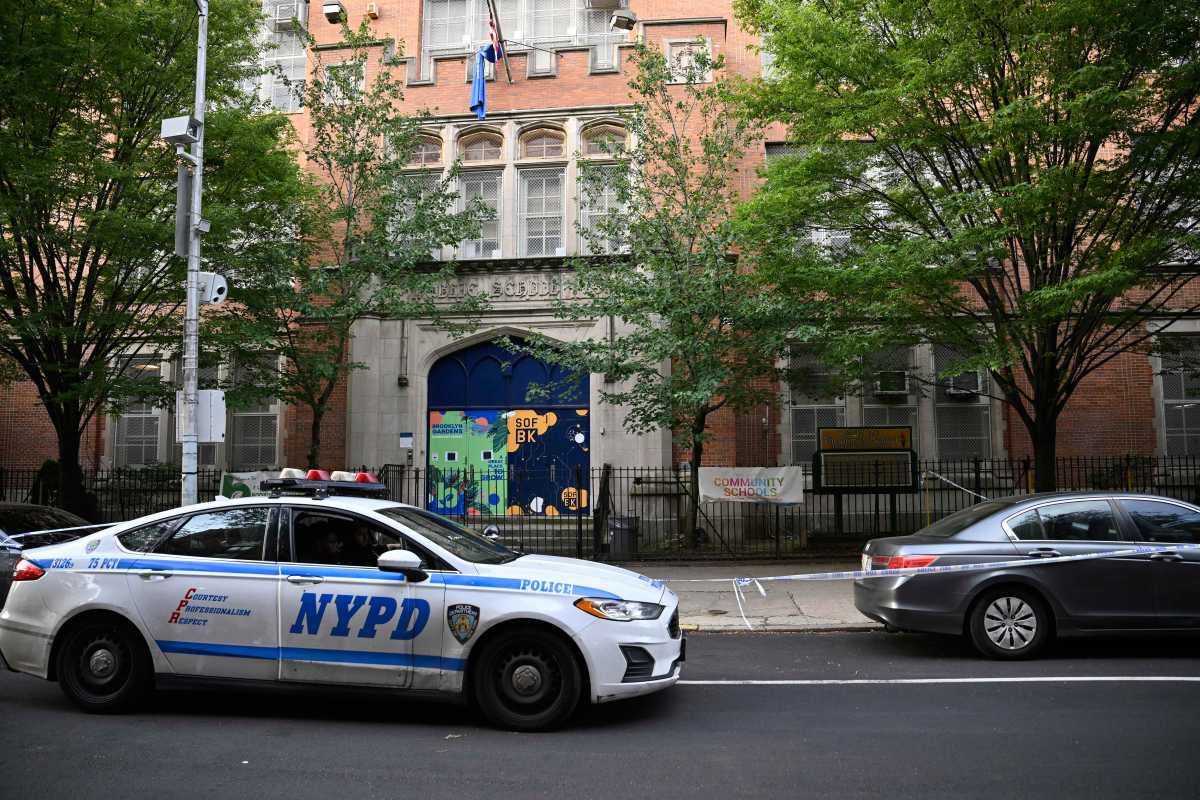A stroke, or “brain attack,” occurs when a blood clot blocks the blood flow in a vessel or artery or when a blood vessel breaks, interrupting blood flow to an area of the brain.
When either of these things happens, brain cells begin to die.
When brain cells die during a stroke, abilities controlled by that area of the brain are lost. These include functions such as speech, movement and memory. The specific abilities lost or affected depend on the location of the stroke and on its severity (i.e., the extent of brain cell death).
For example, someone who has a small stroke may experience only minor effects such as weakness of an arm or leg. Someone who has a larger stroke may be paralyzed on one side or lose his/her ability to speak. Some people recover completely from less serious strokes, while other strokes can be fatal.
The National Stroke Association (NSA) began to champion the term “brain attack” in 1990 because it characterizes stroke more clearly to the public. The origination of the term and its application to stroke are credited to Vladimir C. Hachinski, M.D., and John Norris, M.D., both world-renowned neurologists from Canada.
The brain is the most delicate organ in the body. “To give the best chance of limiting damage, brain attacks should be heeded even more urgently than heart attacks,” said Dr. Hachinski. The symptoms of stroke should have the same alarming significance in identifying a brain attack that severe, specific chest pain has in identifying a heart attack. The appropriate response to a brain attack is emergency action, both by the person it strikes and the medical community.
Brain Attack Means Medical Emergency
Educating the public to treat stroke as a brain attack and to seek emergency treatment is crucial. Every minute people lose getting treatment increases the chances of them experiencing stroke-related disabilities or death. The majority of patients don’t arrive at the emergency room until more than 24 hours after they experience stroke symptoms.
The only FDA-approved treatment for stroke, a clot-busting drug, must be administered within three hours of the first signs of stroke.
One of the largest obstacles to emergency treatment is that many people don’t know they are having a stroke. The University of Cincinnati reported that 52 percent of their acute stroke patients were unaware they were experiencing a stroke. That is why it is critical for everyone to “Be Stroke Smart” and learn the three R’s of stroke: reduce risk, recognize symptoms, respond by calling 911.
The Myth vs. Reality of Stroke
Myth: Stroke is not preventable. Reality: Almost 80 percent of strokes are preventable
Myth: Stroke cannot be treated. Reality: Stroke requires emergency treatment
Myth: Strokes only strike the elderly. Reality: Strokes can happen to anyone of any age
Myth: Stroke happens to the heart. Reality: Stroke occurs in the brain
Myth: Stroke recovery happens for a few months post-stroke. Reality: Stroke recovery can continue throughout life
The Cost of Stroke to Americans
• Stroke is our nation’s third leading cause of death, killing 160,000 Americans every year.
• Every year more than 750,000 Americans have a new or recurrent stroke.
• Every 45 seconds in the United States, someone experiences a stroke.
• Over the course of a lifetime, four out of every five American families will be touched by stroke.
• Approximately one-third of all stroke survivors will have another stroke within five years.
• Of the 590,000 Americans who survive a stroke each year, approximately 5 to 14 percent will have another stroke within one year. The rate of having another stroke is about 10 percent per year thereafter.
• Stroke is the leading cause of adult disability. Over four million Americans are living with the effects of stroke. About one-third have mild impairments, another third are moderately impaired and the remainder are severely impaired.
• Stroke costs the United States more than $52 billion annually. Direct costs, such as hospitals, physicians and rehabilitation add up to $32 billion; indirect costs, such as lost productivity, total $20 billion. The average cost per patient for the first 90 days post-stroke is $15,000, although 10 percent of the cases exceed $35,000.
The Poor Public Awareness of Stroke
A 1996 NSA/Gallup Survey on stroke awareness in the United States revealed the following:
• Among adults age 50 or older, 38 percent did not know that stroke occurs in the brain.
• 19 percent were unaware that many strokes can be prevented.
• Only 40 percent would call 911 immediately if they were having a stroke.
• Two-thirds were unaware of the short time frame in which a person must seek treatment.
• Only 8 percent correctly defined a Transient Ischemic Attack (TIA) as a small stroke.
The survey also showed that older Americans could not identify the following stroke symptoms:
• Sudden blurred or decreased vision in one or both eyes %u2013 91 percent
• Loss of balance or coordination (a major sign when accompanied by another symptom) %u2013 85 percent
• Difficulty speaking or understanding simple statements %u2013 68 percent
• Weakness, numbness, or paralysis in the face, arm or leg %u2013 42 percent
The Toll on Older Adults
• Stroke risk increases with age. For each decade after age 55, the risk of stroke doubles.
• For adults over age 65, the risk of dying from stroke is seven times that of the general population.
• Two thirds of all strokes occur in people over age 65.
The Toll on Women
•Twice as many women die from stroke than from breast cancer every year.
•Two-thirds of American women don’t know stroke symptoms or that they must get immediate medical treatment.
• One-third of strokes in women occur in those under the age of 65.
• 100,000 young and middle-aged women will suffer a stroke this year.
• African American women have the highest rate of stroke prevalence among the three major female ethnic groups, including Caucasians and Hispanics.
•Women who smoke and take birth control pills are four times more likely to have a stroke.
• Stroke has a disproportionate effect on women. Women account for approximately 43 percent of the strokes that occur each year, yet they account for 61 percent of stroke deaths.
The Toll on African Americans
• The incidence rate for first stroke among African Americans is almost double that of Caucasians %u2013 288 per 100,000 African Americans, compared to 179 per 100,000 whites.
• African Americans suffer more extensive physical impairments that last longer than those of other racial groups in the United States.
• African Americans are also twice as likely to die from a stroke. Stroke mortality for this group is nearly double that for Caucasians.
• African Americans have a disproportionately high incidence of risk factors for stroke, particularly hypertension, diabetes, obesity, smoking and sickle cell anemia.
Types of Strokes
There are two types of “brain attacks” — ischemic and hemorrhagic. With ischemic strokes, a blood clot blocks or “plugs” a blood vessel in the brain. With hemorrhagic strokes, a blood vessel in the brain breaks or ruptures.
Ischemic strokes are the most common kind of stroke causing 84 percent of all strokes.
In everyday life, blood clotting is beneficial. When you are bleeding from a wound, blood clots work to slow and eventually stop the bleeding. In the case of stroke, however, blood clots are dangerous because they can block arteries and cut off blood flow to the brain, a process called ischemia. An ischemic stroke can occur in two ways — embolic and thrombotic strokes.
In an embolic stroke, a blood clot forms somewhere in the body (usually the heart) and travels through the bloodstream to your brain. Once in your brain, the clot eventually travels to a blood vessel small enough to block its passage. The clot lodges there, blocking the blood vessel and causing a stroke. The medical word for this type of blood clot is embolus.
In the second type of ischemic stroke, blood flow is impaired because of a blockage to one or more of the arteries supplying blood to the brain. The process leading to this blockage is known as thrombosis. Strokes caused in this way are called thrombotic strokes. That’s because the medical word for a clot that forms on a blood-vessel deposit is thrombus.
Blood-clot strokes can also happen as the result of unhealthy blood vessels clogged with a buildup of fatty deposits and cholesterol. Your body regards these build-ups as multiple, tiny and repeated injuries to the blood vessel wall. So your body reacts to these injuries just as it would if you were bleeding from a wound—it responds by forming clots.
TIAs — Stroke Warnings
Transient ischemic attacks, or TIAs, are brief episodes of stroke symptoms resulting from temporary interruptions of blood flow to the brain. TIAs can last anywhere from a few seconds up to 24 hours. Unlike actual strokes, TIAs do not kill brain cells, and therefore, do not result in permanent brain damage. However, they can be warning signs of an impending stroke.
The symptoms of a TIA are the same as for a stroke:
• Sudden numbness of face, arm or leg, especially on one side of the body
• Sudden trouble seeing in one or both eyes
• Sudden confusion, trouble speaking or understanding
• Sudden trouble walking, dizziness, loss of balance or coordination
• Sudden severe headache with no known cause
If a person experiences any of these symptoms, for even the briefest amount of time, he or she should seek medical attention immediately. Urgent response to symptoms is important for two reasons:
• If you are having an actual stroke, emergency medical attention could save your life and greatly improve your chances for successful rehabilitation and recovery.
• If you are having a TIA, your doctor will evaluate and treat the underlying causes. Unfortunately, most people who have TIAs neglect to seek treatment, either because the symptoms are painless or because they choose to attribute their symptoms to old age, fatigue, etc. Only 42 percent of patients seek treatment within 24 hours of experiencing symptoms.
TIAs should never be ignored. Approximately 10 percent of all strokes are preceded by TIAs. Stroke risk increases 10-fold in someone who has had a TIA. Fully one-third of all persons who experience TIAs will go on to have an actual stroke. The first year after a TIA is an especially critical period:
• 5 percent of those strokes will occur within one month of the TIA or previous stroke
• 12 percent will occur within one year
• 20 percent will occur within two years
• 25 percent will occur within three years
Other important but less common stroke symptoms include:
• Sudden nausea, fever and vomiting — distinguished from a viral illness by the speed of onset (minutes or hours versus several days)
• Brief loss of consciousness or period of decreased consciousness (fainting, confusion, convulsions or coma)
• Sudden severe headache with no known cause
• Sudden numbness or weakness of face, arm or leg, especially on one side of the body
• Sudden trouble walking, dizziness, loss of balance or coordination
• Sudden confusion, trouble speaking or understanding
• Sudden trouble seeing in one or both eyes
Stroke Risk Factors and Their Impact
Stroke is one of the most preventable of all life-threatening health problems. Risk factors for stroke fall into two categories: those that can be controlled through lifestyle changes or medication and those that cannot. It’s important to remember that having one or more uncontrollable stroke risk factors does not make a person fated to have a stroke. With proper attention to controllable stroke risk factors, the impact of uncontrollable factors can be greatly reduced.
Uncontrollable Stroke Risk Factors
Age: The chances of having a stroke increase with age. Two-thirds of all strokes happen to people over age 65. Stroke risk doubles with each decade past age 55.1, 2
Gender: Males have a slightly higher stroke risk than females. But, because women in the United States live longer than men, more stroke survivors over age 65 are women.
Race: African Americans have a higher stroke risk than some other racial groups. Hispanics also appear to have an increased risk of stroke, although not to the same degree as African Americans.
Family history of stroke or TIA: Risk is higher for people with a family history of stroke or TIA.
Personal history of diabetes: People with diabetes have a higher stroke risk. This may be due to circulation problems that diabetes can cause. In addition, brain damage may be more severe and extensive if blood sugar is high when a stroke happens. Treating diabetes may help delay the onset of complications that increase stroke risk. However, even if diabetics are on medication and have blood sugar under control, they may still have an increased stroke risk simply because they have diabetes.
Controllable Stroke Risk Factors
Treatable medical disorders that increase stroke risk include:
High Blood Pressure: Having high blood pressure, or hypertension, increases stroke risk four to six times. It is the single most important controllable stroke risk factor. High blood pressure is often called “the silent killer” because people can have it and not realize it, since it often has no symptoms. Hypertension is a common condition, affecting approximately 50 million Americans, or one-third of the adult population. Blood pressure is high if it is consistently more than 140/90. Between 40 and 90 percent of all stroke patients had high blood pressure before their stroke. Hypertension puts stress on blood vessel walls and can lead to strokes from blood clots or hemorrhages.
Coronary Heart Disease and High Cholesterol: High cholesterol can directly and indirectly increase stroke risk by clogging blood vessels and putting people at greater risk for coronary heart disease, another important stroke risk factor. A cholesterol level of more than 200 is considered “high.” Cholesterol is a soft, waxy fat in the bloodstream and in all of your body’s cells. Your body naturally makes all the cholesterol it needs to form cell membranes, some hormones and vitamin D. In addition, certain foods (such as egg yolks, liver or foods fried in animal fat or tropical oils) contain cholesterol and saturated fats which increase cholesterol levels. High levels of cholesterol in the blood stream can lead to the buildup of plaque on artery walls, which can clog arteries and cause a heart or brain attack.
Atrial fibrillation: Heart disease such as atrial fibrillation increases stroke risk up to six times. About 15 percent of all people who suffer stroke have a type of heart disease called atrial fibrillation, or AF. Affecting more than 2 million Americans, AF is caused when the atria (the two upper chambers of the heart) beat rapidly and unpredictably, producing an irregular heartbeat. AF raises stroke risk because it allows blood to pool in the heart. When blood pools, it tends to form clots which can then be carried to the brain, causing a stroke.
Normally, all four chambers of the heart beat in the same rhythm somewhere between 60 and 100 times every minute. In someone with AF, the left atrium may beat as many as 400 times a minute. If left untreated, AF can increase stroke risk four to six times.
Over time, untreated AF can also weaken the heart, leading to potential heart failure.
The prevalence of AF increases with age. AF is found most often in people over age 65 and in people who have heart disease or thyroid disorders. Among people age 50 to 59, AF is linked to 6.7 percent of all strokes. By ages 80-89, AF is responsible for 36.2 percent of all strokes.
Personal history of stroke or TIA: People who have already had a stroke or TIA are at risk for having another. After suffering a stroke, men have a 42 percent chance of recurrent stroke within five years, and women have a 24 percent chance of having another stroke. TIAs are also strong predictors of stroke because 35 percent of those who experience TIAs have a stroke within five years.
Lifestyle Factors that Increase Stroke Risk Include:
Smoking: Smoking doubles stroke risk. Itdamages blood vessel walls, speeds up the clogging of arteries by plaque deposits, raises blood pressure and makes the heart work harder.
Alcohol: Drinking more than two drinks per day may increase your risk for stroke by almost half. Recent studies have also suggested that light to moderate alcohol consumption (up to two 4 oz. glasses of wine or the alcohol equivalent) may protect against stroke by raising levels of a naturally occurring “clot-buster” in the blood. Alcohol is a drug and may interact with other medications. NSA’s prevention guidelines recommend that if you currently don’t already drink, don’t start.
Weight: Excess weight puts a strain on the entire circulatory system. It also makes people more likely to have other stroke risk factors such as high cholesterol, high blood pressure and diabetes.
For more, on strokes, and to obtain information, resources and statistics on all aspects of stroke, visit the National Stroke Association at www.stroke.org or call1-800-STROKES (1-800-787-6537).






















